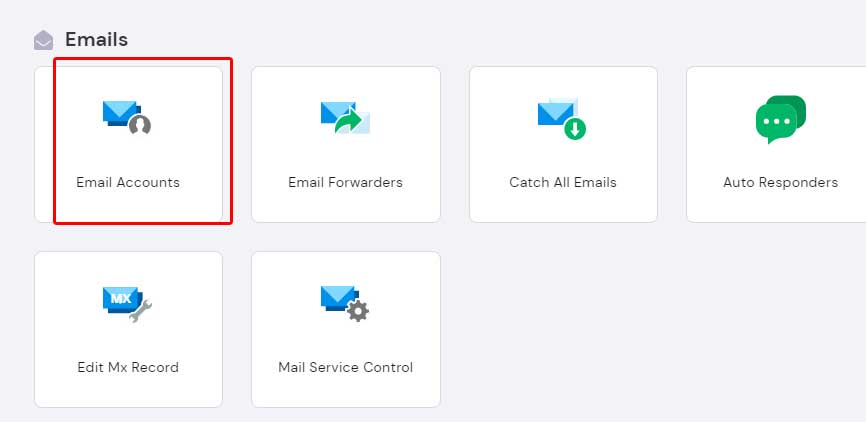Best WordPress SMTP plugin – How to send Email through SMTP in WordPress
Are you using WordPress directly to send emails, notifications or authentications to your clients? Are you wondering why your emails got blocked? Are you surprised to hear from your clients that your emails are found in spam folder? Are you sick to have learnt that your email notifications don’t reach your client’s inbox? Then you should read this article till end. Before I proceed I would like to notify you that this article is all about WP Mail SMTP Plugin by WPForms. So you would need to have WP Mail SMTP Plugin installed and activated.
With the free version of WP Mail SMTP Plugin you would be able to setup SMTP for SMTP.com, Sendinblue SMTP, Mailgun SMTP, SendGrid SMTP, Gmail SMTP & Other SMTP. You may subscribe to WP Mail SMTP Pro for additional premium features such as Microsoft SMTP (Outlook.com and Office 365), Amazon SES SMTP & Zoho Mail SMTP. You also get WHITE GLOVE SETUP support with the premium version of WP Mail SMTP Plugin. Click on the image below to subscribe to WP STMP Pro.
First let’s understand why Emails are likely to get blocked when sent directly thorough WordPress? Why WordPress Email deliverability isn’t reliable?
The built-in configuration in WordPress uses PHP (Hypertext Preprocessor) mail function to send emails. And most of the times the web hosting companies don’t have their PHP email configurations properly set. This way the emails that are sent are not properly optimized and authenticated. Hence they get either blocked or spammed. Popular email services such as Gmail, Outlook Mail and Yahoo Mail don’t really entertain such emails. As a result they are simply blocked or moved to spam folder.
Most of the popular email service providers expect the emails to be sent via SMTP (Simple Mail Transfer protocol) which is a standard protocol to send and receive Emails. That means that you would have to re-configure WordPress email function to use standard SMTP protocol and use SMTP host credentials of your web host.
Emails not delivered or blocked is a more annoying thing for those who are running E-Commerce websites, because such websites need to send a lot of auto responding emails such as user registration confirmation, email notifications, password verification, order confirmation and more.
So What’s the solution?
The solution is pretty much simple you will have to make WordPress re-configure email function in order to use standard SMTP protocol. How would you do this? Again the answer is simple: You would need a SMTP plugin to harness WordPress email system.
So which is the best SMTP plugin for WordPress?
My sincere recommendation would be to use WP Mail SMTP Plugin by WPForms. The free version itself is sufficient to setup popular email services. They do offer premium features with more facilities and extended support. Click on the image below to know more about WP Mail SMTP Pro:
Now let’s jump to the practical portion of this tutorial: How to setup WordPress SMTP?
Well! You can do this in 3 simple steps as below:
- Identify the mail server name and port of your web hosting service
- Creating a cpanel email (If you already have an email you could use its credentials such as username & password)
- Install WP Mail SMTP plugin, enter mail server details and save the settings
Now let’s see in detail:
You may either watch this step by step video tutorial for a better understanding or continue to read this article:
First Step: How to find SMTP information in your hosting cpanel?
There are different ways to know the SMTP details but I am going to show you how to get these information from your hosting cpanel. As my website is hosted in hostinger.in (The Best and Cheap Web Hosting Service in India), I could show you how you could get these details from hostinger’s hpanel. Your cpanel should have similar options.
Login to your Hostinger’s Hpanel ⇒ click on Hosting ⇒ then click on Manage button of any of your domains ⇒ then scroll down and click on Email Accounts ⇒ Now you should be able to see your website’s Outgoing Mail (SMTP) Server details. Just note down the Host name and Port number. Please refer to the images below:
Second Step (optional): Creating a cpanel email (If have one already you could use its credentials)
As WP Mail SMTP plugin requires you to enter the email username and password, you should either enter the existing email credentials or create a new cpanel email and use its username and password credentials. So to create an email account using your cpanel follow these steps:
Form the Hostinger’s Hpanel ⇒ Go to Email Accounts ⇒ In the Create a New Email Account section type a name such as support or info or help etc and enter a password (these credentials are needed to set up WP Mail SMTP) ⇒ Then click on the create button. Please refer to the images below:
Third & Final Step: Installing and Configuring WP Mail SMTP Plugin
So to install the plugin ⇒ From the WordPress dashboard go to plugins ⇒ Click on add new ⇒ Type WP Mail SMTP in the search box ⇒ Then click on install now ⇒ Then click on activate. Please refer to the images below:
Configuring WP Mail SMTP WordPress Plugin
To configure WP Mail SMTP ⇒ From the dashboard Go to WP Mail SMTP and click on settings ⇒ For the from email type in the email id name you just created in the previous step. In my case I’ll be using support@hbninfotech.com
Then check force from email (this option lets the email receiver know from which email id the message was sent)
The from name could be your company’s name or your name. Then check force from name (enabling this option will let the email receiver know who has sent the mail)
set return path to match the from email (checking this option will send the bounced messages back to the email id that is set in from email).
Then for the mailer select Other SMTP
Then for the SMTP Host type the outgoing server name of your website host. For the Encryption select TLS as it is recommended. For the SMTP Port type the port number of your website host. Then turn on the Authentication. Check the image below for reference.
Then for the SMTP Username & SMTP Password type the email id name and password credentials that you created in your cpanel in the previous step ⇒ Then click on save settings.
Now that the WP Mail SMTP configuration is done, Lets do an Email Test
To check whether the configuration works, you could do an email test. To do that ⇒ Go to email test section of WP Mail SMTP settings ⇒ Type an email id of your’s in the send to field ⇒ Then click on send email button as shown below:
Once you have clicked on send email button you should receive an confirmation email inside your inbox as shown below:
If you have gotten a confirmation like the above you, means you have done the settings perfectly. If you didn’t means that you have probably messed with the settings.
Final Thoughts & Conclusion
If you are using your WordPress website to send emails: whether it be a notification or be it a password reset or an email confirmation, you need to have WP Mail SMTP Plugin installed to ensure email deliverability. The free version of WP Mail SMTP Plugin allows you to setup SMTP for SMTP.com, Sendinblue SMTP, Mailgun SMTP, SendGrid SMTP, Gmail SMTP & Other SMTP.
Subscribing to WP Mail SMTP Pro will get you access to additional premium features such as Microsoft SMTP (Outlook.com and Office 365), Amazon SES SMTP, Zoho Mail SMTP & most importantly WHITE GLOVE SETUP support. So what are you waiting for, just click on the image below to subscribe now.
- MS Word Shortcut Keys PDF - October 13, 2024
- What is MS Word and its Features PDF - October 10, 2024
- 10 Free Word Templates for Every Need - October 10, 2024





























Nice and wonderful blog, great work.